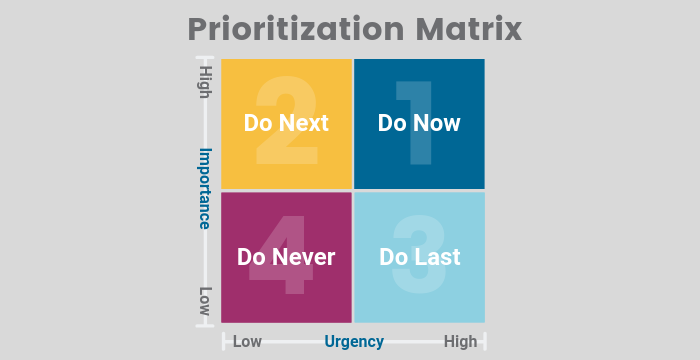Soliciting Feedback: How to Do It Well
Giving, receiving, and acting on employee feedback is essential for organizations that want to improve their company culture. Nearly 60% of surveyed employees and 72% of employees under 30 want feedback from their bosses daily or weekly, according to PricewaterhouseCoopers.
Feedback solicitation matters at every level. But asking for feedback – and then receiving it with grace – can be challenging. Even though most employees and managers want to receive feedback, PricewaterhouseCoopers reported that only 30% say they regularly receive it. That’s because asking for feedback can be awkward and uncomfortable.
Thankfully, creating a culture of healthy, back-and-forth feedback is possible. When it comes to soliciting and receiving feedback from employees, here’s what you should keep in mind.
How to Ask For Feedback
You can ask for feedback in a number of ways – by arranging meetings with employees or by sending out a large scale survey. We recommend soliciting feedback in both of these ways, but for best results, you need to have a number of one-on-one conversations. Here’s how to solicit feedback in one-on-one meetings so that you get actionable results.
- Loop employees in. If you’re soliciting feedback from employees, you want them to be prepared. You don’t want to surprise them with unexpected meetings or email surveys that they did not expect to receive. Be sure to loop employees in early, explaining how you’ll be soliciting feedback, and why you’re doing it.
- Focus on the qualitative. Although quantitative feedback is easy to analyze and has its place in large surveys, it’s best to ask for qualitative feedback, as employees’ perspectives can be very nuanced. Ask open-ended questions and allow the conversation to move in different directions, depending on what’s most pressing.
- Show interest by asking questions. In order for employees to be honest and direct with their feedback, you need to show you are interested in them. Start by asking about what’s going on in their lives, how they feel about coming to work every day, and what their future goals are. Remember to keep your questions open-ended.
- Pay attention to nonverbal cues. Not all the feedback you receive will be verbal. Nonverbal cues, such as looking away, and body language, such as crossing your arms, can tell you a lot about an employee’s comfort level.
How to Receive Employee Feedback With Grace
Soliciting feedback from employees can help you make improvements, as it gives you essential information about the current workplace. However, you’re likely to get feedback that’s difficult to hear. You might not agree with what your employees have to say, be confused about the feedback, or even be personally offended. Even so, you need to receive feedback with grace in order for it to be a healthy experience for employees and the organization as a whole. Here are a few tips:
- Listen and be ok with uncomfortable silence. Although you may be tempted to combat feedback with explanation, your job is to listen to what employees have to say. This means listening to an employee explain themselves, as well as being ok with uncomfortable silence as an employee thinks through their answers.
- Avoid defensiveness. Employees need to feel safe when offering their feedback, and defensiveness is an immediate way to prevent them from sharing. Sometimes we get defensive without even realizing it. Resist the urge to explain yourself, blame others, or question the validity of the employee’s perspective.
- Check your body language. If you cross your arms or sit far away from the employee, you’re sending a signal that you are not open to hearing what they have to say. Make sure your body is relaxed – and lean in. This helps create a friendly and welcoming atmosphere that makes employees feel more comfortable. This comfort will lead to more honest and productive feedback, which will help you get better insights that you can learn and grow from.
- Own your mistakes and apologize when necessary. You’re likely to receive feedback about mistakes that you or your organization has made. Rather than blaming the employee or denying the mistakes, own up to them. Admit that things may not have been handled in the best way, and tell the employee that you’ll make sure the feedback gets to the top levels of the organization.
Using Feedback to Grow
The purpose of feedback is to gather information that can help you, your employees, and your organization grow. Throughout the process, be sure to document the feedback. If you don’t document your conversation in some way, then you won’t be able to quantify what you learned so that you can make improvements. A big part of figuring out what to do with feedback is taking the time to organize, review, and understand what it is that people are saying. Not everyone will say exactly what they think you can do to improve and ultimately, it’s up to you to find ways to improve. You may need to dig deeper into vague or negative responses to determine what actions you can take.
Although soliciting and receiving feedback can be challenging, it’s essential for maintaining a healthy company culture where employees feel they have a say.
This post is part of a special blog series on ‘Building a Healthy Feedback Culture' in support of ProService’s Growth Series event taking place on September 19, 2018. Offered exclusively to ProService clients and special guests, the Growth Series are interactive learning experiences that feature industry-leading speakers and networking opportunities that will inspire and provide tools for business leaders to take their organizations to the next level.









